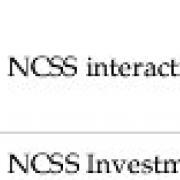With this issue of Cutter Benchmark Review we focus on a very tangible problem that all modern organizations face: maximizing their investments in Web site design. How to maximize the ROI of a Web presence is an important challenge for organizations since, today, the Web is a key customer-interaction touch point for all but the very small firms. Web sites are one of the primary engines through which customers transact with an organization, access support services, and engage in after-sales service.
With colleagues from Queen's University (Canada), the University of Georgia (USA), and the University of Miami (USA), I have studied the challenges involved in maximizing Web site ROI as part of a larger problem: that of the optimal use of network-based customer service systems (NCSSs). We define an NCSS as: "a network-based computerized information system that delivers service to a customer either directly (e.g., via a browser, PDA, or cell phone) or indirectly (e.g., via a service representative or agent accessing the system)."1 Thus, a Web site is an instance of an NCSS. In our work, we introduced the notion of NCSS interaction value as measured by the following equation:
NCSS Interaction Value = (NCSS Usefulness + Experience Quality) - Cost of NCSS Use
As a consequence, the return on an organization's NCSS investments will be measured as:
where the given firm has a total of n customers.
With this formula as the basis for the evaluation of a Web site's contribution to the value-creation mission of the organization, it becomes apparent how the interaction value created by the site is a critical variable of interest. Web site interaction value is predicated on the usefulness of the site, its interaction quality, and the cost to customers of using the site. Since these three variables depend greatly on the quality of the site design itself, it became obvious to us that an issue of CBR devoted to benchmarking Web site design and quality assurance practices would be very useful.
While relatively new as a discipline, Web site design and quality assurance has grown to a great level of sophistication and specialization. To help us understand and navigate the increasingly complex area of Web site quality, we enlisted the help of two contributors who have been monitoring the evolution of the Web practically since its inception. Our academic perspective on this issue is provided by Eleanor Loiacono, Associate Professor of Management, Information Systems, at the Worcester Polytechnic Institute (USA). On a personal note, Eleanor was the very first academic I met outside of my institution. We met at the International Conference for Information Systems when we were both doctoral students -- more than 12 years ago! Even then, Eleanor was interested in research pertaining to the Web, and she ended up writing her dissertation on Web site quality and developing WebQual (an instrument to evaluate the quality of Web sites that she discusses in her piece) from this early work.
Our contributor from the practicing side is Martin Bauer, Senior Project Manager at Next Digital. He has more than 10 years of experience in Web development and Web-based content management and is the world's first certified Feature-Driven Development Project Manager.
Eleanor begins her contribution by pointing to the key challenge in Web site quality measurement: the fact that, like any evaluation of service quality, it is a subjective customer evaluation. She then divides her evaluation of the survey results into two main sections. In the first, she focuses on the customer and the company perspective. In the second, she focuses on Web site accessibility. One thing that I think you will find very valuable is Eleanor's description and anecdotes referring to the use of WebQual, an instrument she has used extensively when working with many organizations in very different industries. I think that you will also find very useful her discussion of the various requirements and initiatives to ensure that your Web site complies with accessibility standards. While perhaps overly focused on North America, where Eleanor does most of her work, I am sure that the principles are widely applicable beyond the US. Her concluding remarks also provide useful guidelines that will help you in evaluating your own Web site as well as little tricks to minimize resource usage, which all come from her experience.
Marty's contribution draws significantly from his experience creating industrial-strength Web sites. I really enjoyed his writing style and his willingness to take a bold stand. I think that his approach fits well with CBR and with the "no nonsense" attitude of our readers who seek answers to tangible problems they face in their organization. Marty starts by reiterating something that may appear obvious but is often forgotten. Establishing, precisely, the purpose of the Web site effort -- I would add not just the site -- is a critical first step in quality assessment. He then evaluates the survey results focusing on and ranking the emerging quality factors. One of the most valuable contributions of Marty's piece, in my opinion, is his stressing of the importance of the testing phase, as I am willing to bet that, assuming you do engage in testing at launch, you quickly forget to ever test again.
At CBR, we feel that we have done a good job when we are able to frame a question of interest to the readership, to gather data from real organizations so as to benchmark the state-of-the-art in that area, and then to draw on the expertise and different perspectives of our contributors in order to offer tangible guidelines that you can readily implement in your organization. I think that with the help of Eleanor and Marty, we have succeeded on all fronts in this issue.









